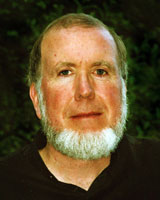I am delighted to bring this audio here. Please download and listen!
 Creative Insight Council April 2009 Austria
Creative Insight Council April 2009 Austria
It is a podcast about Dynamic Facilitation and the success of A Creative Insight Council (close to a Wisdom Council) in a city in Austria.
This does not really explain what Dynamic Facilitation is, or the principles of an CIC, or Wisdom Council. It is a process developed in the USA by Jim Rough. See my earlier blog post.
I hope this audio will motivate you to explore that.
If you are familiar with Psychodrama, I can say this: it is a highly sociometric process with strong facilitation from a neutral facilitator. The group of 12 or so is created by lottery in the whole population of the city or country! Such is the nature of systems, there is isomorphy (self similarity) from the microcosm to the macrocosm and the group, if well publicised, is the protagonist group for the whole community. A microcosm CAN experience the deep heart-felt transformation of a small group process and give back its wisdom to the whole, who are likely to be receptive as the group was made up of a diverse, non-expert group.
For people familiar with Imago Relationship Therapy, this is a process of facilitation that used a dialogue process. Not so much *between* the participants who do not need to learn how to send or receive, but through the facilitator.
One difference between DF, Dynamic Facilitation and the two process I mention above, Psychodrama and Imago, is that the facilitation works towards solution statements.
Note that these councils do not seek any formal power, nor will they meet again after the council is over.
~
I am really inspired. I have always had a hunch that the small group process which has been so powerful in my life would change the world but I could never quite see how. Now I get it! Fantastic.


 Creative Insight Council April 2009 Austria
Creative Insight Council April 2009 Austria